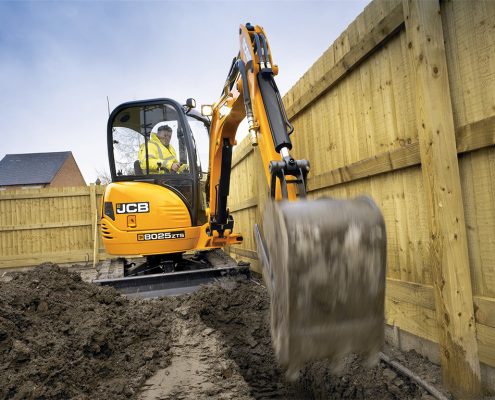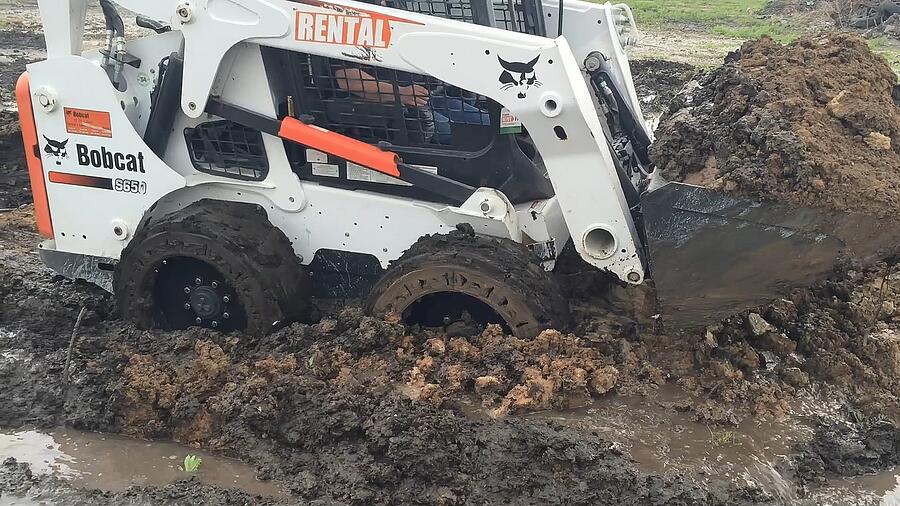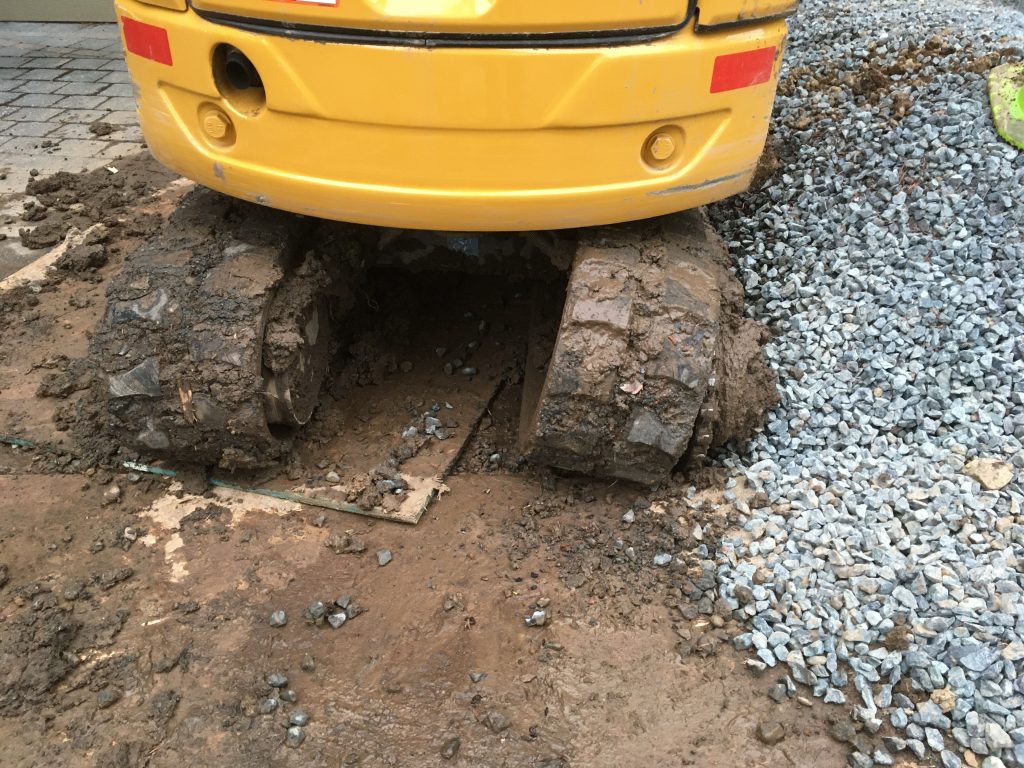Tracked vs Wheeled Heavy Machinery

If you’ve decided to take on a landscaping job yourself and are wondering what the difference between tracked and wheeled vehicles are, this is a short explanation for you.
Utilities
Seen on many skidloaders, excavators, and other heavy equipment, tracks or wheels are what allows the vehicle to gain traction. Due to the nature of the construction work, it’s rare that these vehicles will be working exclusively from a paved prepared surface and so one cannot use normal tires found on every day vehicles.
In general, wheels are for surfaces with good traction while tracks are for areas with poor traction. However, it’s a bit more nuanced than that.
Pros
Wheeled vehicles can be cheaper to rent, maintain, and purchase. They are less complicated to engineer and less prone to breakdowns when used properly. Wheels themselves are also cheaper to replace than tracks. Additionally, wheeled vehicles can traverse faster and cause far less damage to the surface it’s driving on.
Tracked vehicles on the other hand provide more stability as it has far more surface in contact with the ground. It has more traction on rough terrain such as mud, which in Victoria, is a common feature on winter worksites. Tracks themselves can also last longer than tires as they are not inflated.
Cons

Wheeled vehicles will get stuck far more often in mud and poor terrain. This is an absolute nightmare as now you need to pause your landscape project, pay someone to pull it out, all the while incurring rental fees. They are also more prone to tipping and flipping due to less contact with the ground as well as sliding sideways down slopes.
Tracked vehicles are more expensive, by quite a margin, to own and maintain and this can affect your rental rates. The spoke wheels that drive the tracks can be clogged with mud and tracks can dislocated and pop off. While this poses no danger, it can be a pain and expensive to put the tracks back on. However, one of the biggest downsides of using tracked vehicles is that they tear up the surface, especially when turning. A single turn of a tracked vehicle on a lawn will completely tear it up. Therefore if the landscape project is in the back and one has to drive from the road out front all the way to the back, the lawn in between will get torn up.

So Which One Should You Use?
Well which one should you go with? The first thing you should ask is what the expected terrain is. If it’s going to be a muddy mess, it’s best to go with a tracked vehicle.
If there’s a slight slope, it’s better to go with tracks for the added traction. The second thing to consider is, whether or not you care about having existing ground cover damaged. There are steps one can take to mitigate this such as using a wheelbarrow more often rather than driving back and forth, or avoid turning as much as possible. One can also lay down plywood although this can be uneconomical and unpractical with mid to large sized areas. Cost really should be your least concern. Finally, in terms of manufacturers and brands, for rentals there really is no difference to end user experience.